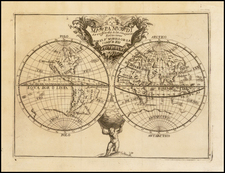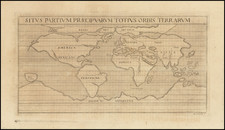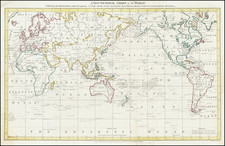Early Research on Magnetics and Global Electromagnetism
A nice example of comparative scientific research on magnetism during a global rise in interest and understanding in this scientific field.
This 1856 chart, based on research by Edward Sabine and Christopher Hansteen, consists of seven lithographed maps detailing Earth's magnetic forces. These maps show the entire world and utilize comparative scientific data from 1787 and 1840 to illustrate the change in global magnetic inclination and lines of equal declination.
Two of the more interesting maps are those that use Carl Friedrich Gauss' data and focus on the North Pole's magnetic declination and inclination. In 1837, Gauss devised a method for measuring magnetic field strength. The poles were increasingly significant to science as they represented one of the last unexplored frontiers on Earth. This sentiment, combined with the strange magnetic properties of the North Pole, explains this inclusion.
This chart is a wealth of scientific information on the rather niche subject field of magnetism. The 19th century saw a major boom in geodesy as researchers gained a deeper understanding of the workings of magnetic fields. The comparison of data from different time periods and sources shows the increasingly quantitative nature of science in the 1800s while the beautiful mapwork reminds one of the emphasis placed on cartographic style at this time.









![[Coffee, Tea, Vanilla & Spices / Pictorial Map of the World -- McCormick & Company]](https://storage.googleapis.com/raremaps/img/small/100117.jpg)
![[World] Air France --](https://storage.googleapis.com/raremaps/img/small/93647.jpg)
![[The centre of this Slider is to be placed by a Thread or Pin over the centre of the respective Planisphere for any Operation]](https://storage.googleapis.com/raremaps/img/small/65557.jpg)


